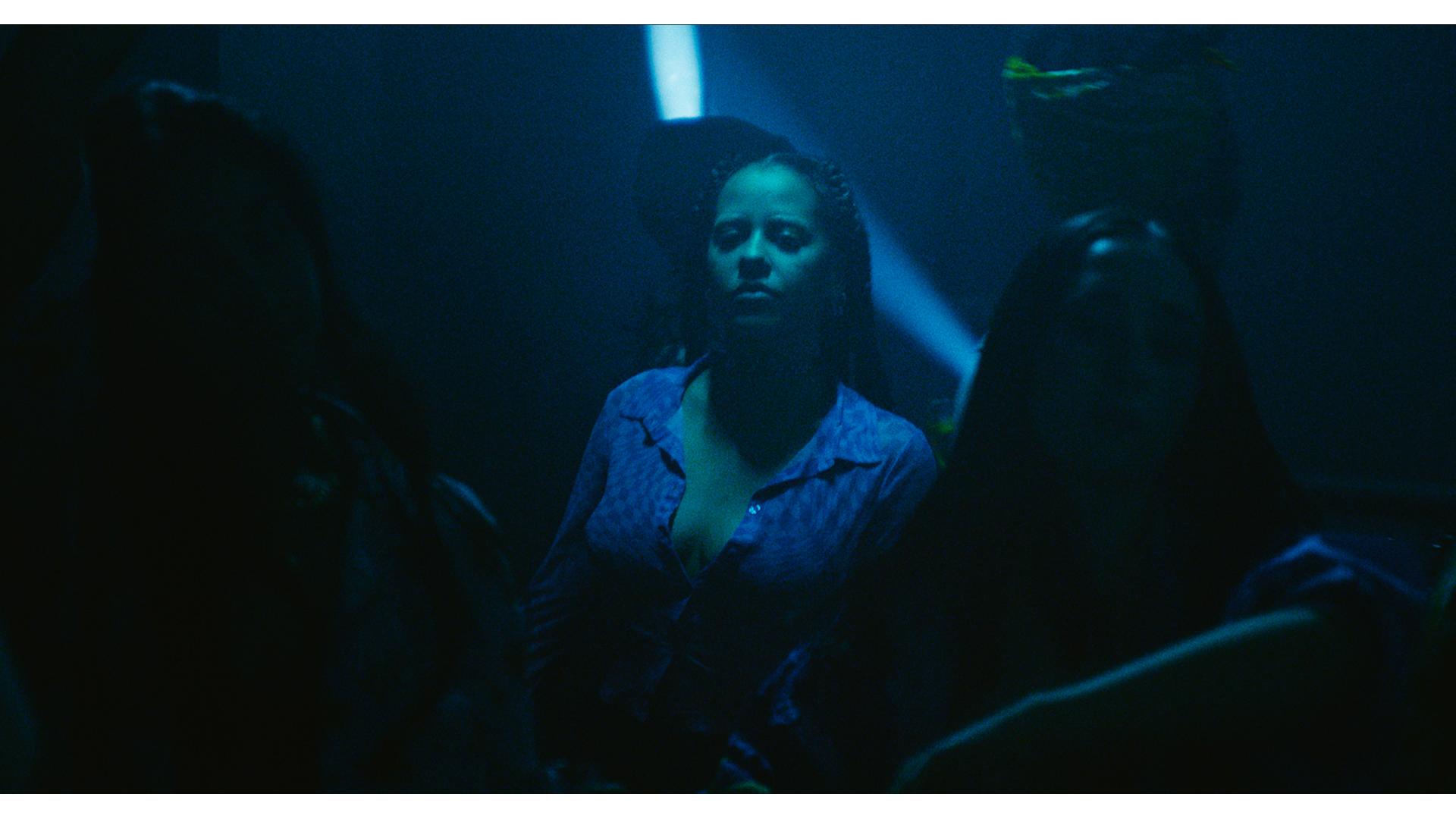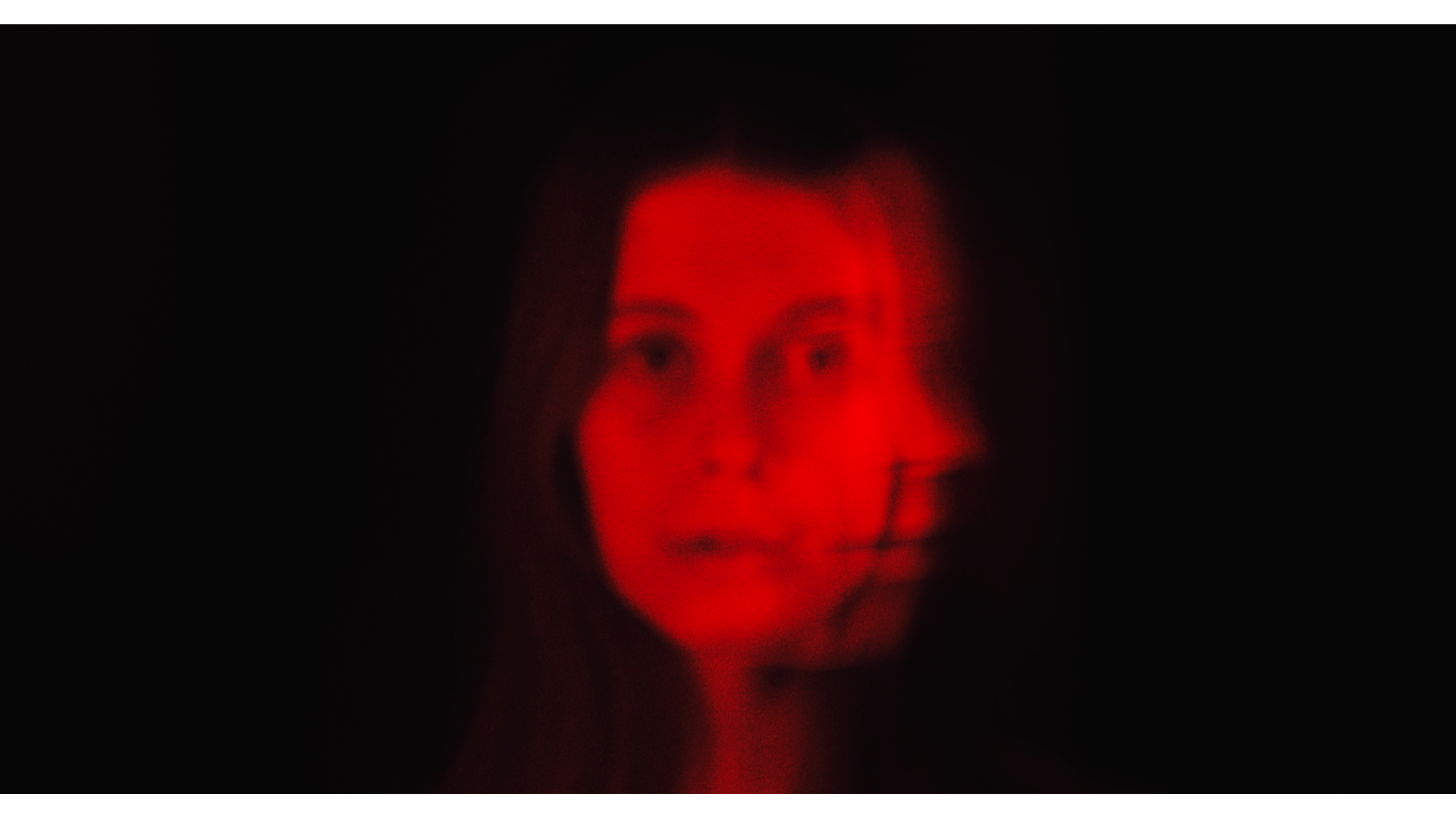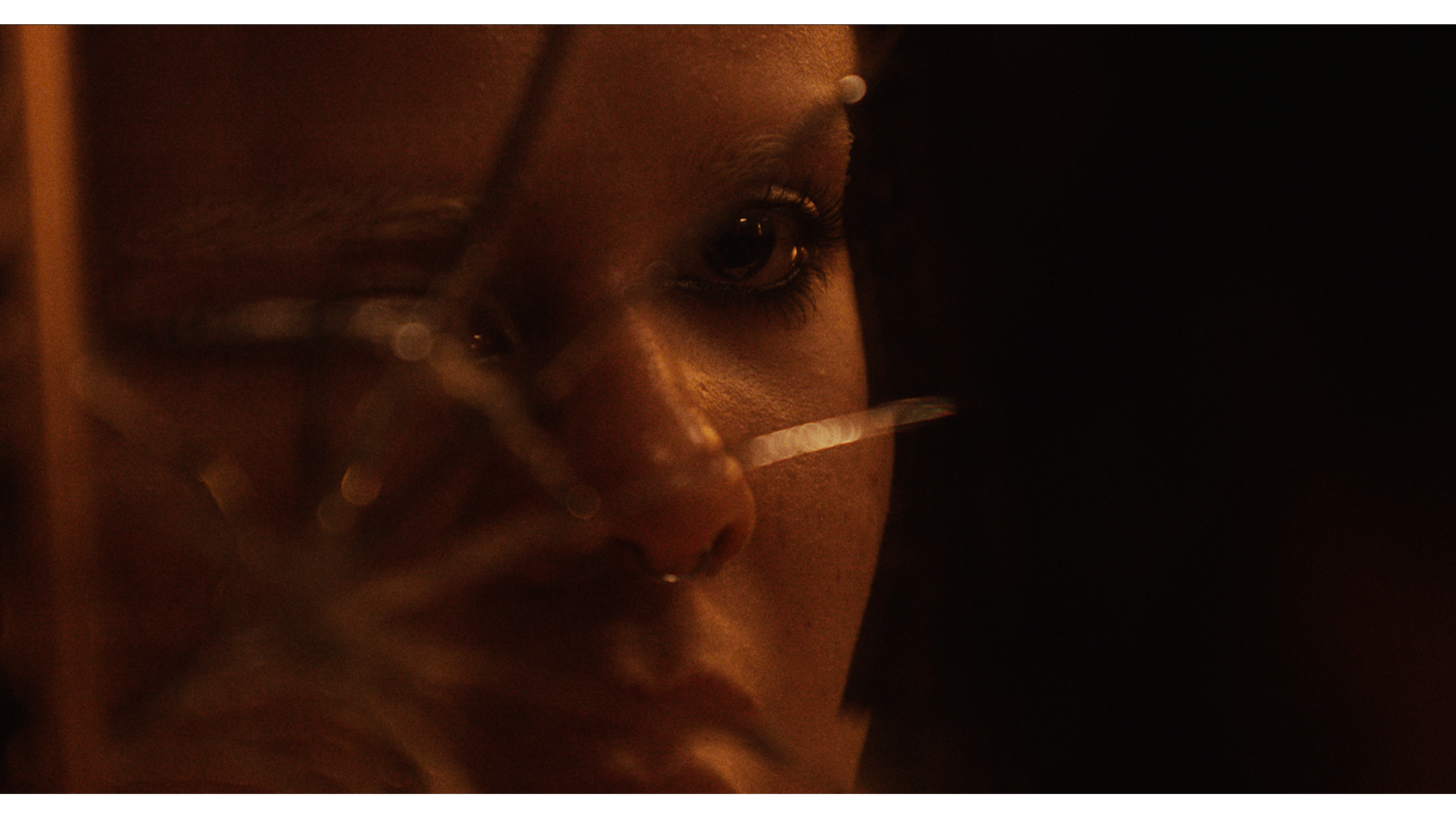Want to hear more from the actors and creators of your favorite shows and films? Subscribe to The Cinema Spot on YouTube for all of our upcoming interviews!
Managing editor & film and television critic with a Bachelor's of Arts in English Literature with a Writing Minor from the University of Guam. Currently in graduate school completing a Master's in English Literature.
The Cinema Spot is back with a new summer’s worth of Tribeca Film Festival coverage. The first film I am covering is a short under the Drama, LGBTQIA+, and Science Fiction categories: original skin, written by Eve Hedderwick Turner and directed by Mdhamiri Á Nkemi.
This short is excellent, with an original concept from Nkemi that would be a tad too difficult to explain in full detail. Nkemi and Turner brilliantly deliver their message about what it means to have an “original skin” through implicit character action. If there is any short film to view at this year’s Tribeca Film Festival, then it should be this one.
In this article, I will be reviewing Mdhamiri Á Nkemi’s original skin. As the review’s title suggests, there will be no spoilers here.
Tribeca’s original skin Logline
According to the Tribeca website, here is the logline for original sin.
In an alternate world where having sex means swapping bodies with the other person, a young woman struggles to be herself. A deeply intimate portrait of identity in transition.
Tribeca Film Festival

Discussion
Nkemi’s original skin is rhetorically sound all over. In the dimension of logos (reason), everything that makes sense about the narrative lies in the premise. Given that this Tribeca short plays within the realm of science-fiction, the writer and the director make matters easier for themselves by bending or cutting corners with the laws of nature. This is a body swap story, after all; and the best examples of films under this subgenre, such as Freaky Friday or Brandon Cronenberg’s Possessor, deal with assessing one’s own (or another’s) identity over a period of time.
Timelessness of Character
The kairos (timing) and the ethos (character), then, are necessary outcomes for this dramatic sci-fi story. Nkemi and Turner paint a picture of a young woman who ventures out into the world to experience her first time. This brings about new results as she consents her soul to enter another human being’s body and theirs into hers… literally. What she comes to find is that she is not quite the same. She has physically undergone a transformative change and can no longer be accepted by her family for who she has become and what she looks like.
The film transitions from focusing on Sorcha Groundsell portraying the protagonist to Olive Gray portraying the protagonist. Not only is there a possible change in sexuality but skin tone (from a white person to a Black person) as well. This adds yet another layer to the narrative. Human beings have always experienced transitions in their lives—from adolescence to teenagehood to adulthood to middle-age crises to death. This has always been the norm, although humanity has slowly been coming to terms with sexual transitioning and well… not so much racial transitioning. (Racism and colorism come with such a rich yet heavy history, and that is an entire body of writing on its own.)
It is surely an intriguing time to live in, but the cast and the crew help the main character(s) remain beautiful throughout. Even at that, the depiction of the body-swapping as a metaphor for transitioning is beyond beautiful; it’s prepossessing. Unfortunately, these sentiments come from me, a heterosexual, and I can only say so much in writing.
A Trippy Tribeca Film
Regardless of whether viewers can relate to the characters in terms of sexuality and race, original skin is about how it makes the individual feel. At the end of it all, this short film succeeds in the pathos (emotion/feeling) that it evokes. Seymour Milton’s composition, paired with the two songs written and performed with vocalist Sanna Ekdahl Akanni, combined with Adam Woodhams’s sound design allows the soundtrack to weave its way in and out of scenes in a snake-like manner.
Combined with the upbeat music, cinematographer Adam Singodia captures close-ups of the two actors. They smoothly go from the dance floor to the bedroom while the music alleviates. This portion of the Tribeca short is a major highlight for me as we witness Groundsell’s protagonist engage in intercourse with her partner through the most necessary sex scenes in short film history. It is all thanks to intimacy coordinator Jenefer Odell’s help in getting the two actors close together, along with visual effects artist Zee Stoitchkov and editor Amber Saunders’ use of space, time, and aesthetics.
I love how Saunders plays with time, such as the jump-cut closing of a purse, Groundsell’s travel from the streets to the club, and the events that occur afterward. The zoom-in shots of the intercourse are alluring, e.g. a frame of supposed goosebumps rising from flesh. It’s that smooth snakelike transition that I love so much, almost as if the characters are shedding off their skin and wearing the other’s in the process.

The Crew Behind original skin
Adam Singodia serves as the director of photography for this Tribeca short film.
Domizia Salusest serves as the stills photographer. Jack Hartley and Ryan Reed are additional stills photographers.
Amber Saunders serves as the editor.
Seymour Milton serves as the music composer for the short. Milton writes and performs two songs with the film’s vocalist, Sanna Ekdahl Akanni.
Adam Woodhams serves as the sound designer.
Gemma Sykes is the casting director.
Jenefer Odell serves as the intimacy coordinator.
Luke Moran-Morris is the production designer. Laura Lily Smith is the art director and set decorator.
Charlotte Van der Haer Richardson serves as the costume designer.
Annie Little serves as the hair and makeup designer. Nikki Roach serves as the hair and makeup artist.
Zdravko “Zee” Stoitchkov serves as the visual effects artist.
The Cast of original skin
Sorcha Groundsell and Olive Gray (Paramount+’s Halo) portray the body-swapped character roles of Bea and Lexi.
Madeleine Worrall plays Kira.
Andrea Lowe plays Dina. Fiona Forster portrays Sister. Nick Haverson plays Father.

Performances and Character Developments
Sorcha Groundsell and Olive Gray both portray Bea very well. Her nervous and almost reserved shell itching to come off is an eerie sight, at first. However, as the short progresses, viewers understand where her mind goes regarding her struggle for acceptance. The pay-off is lovely in the final few scenes, where Gray takes upon the role of the character. They do an interesting job of matching Groundsell’s performance, eventually finding their place and composure back on the dance floor.
Final Thoughts on original skin
Nkemi and Turner’s original skin is a necessary short film for where we are in history. As a work of cinema, it is an attractive short that conveys all that it needs to while saying enough in dialogue. The intended mixture of the music, the editing, and visual effects is what carries the narrative. Overall, this is a must-see film if it can be seen at the festival or elsewhere outside of it after.
5/5 stars
Mdhamiri Á Nkemi’s original skin screens at the Tribeca Film Festival starting June 6th!
For more drama and science-fiction-related news and reviews, follow The Cinema Spot on Facebook, Twitter, and Instagram!
Managing editor & film and television critic with a Bachelor's of Arts in English Literature with a Writing Minor from the University of Guam. Currently in graduate school completing a Master's in English Literature.





One Comment on “‘original skin’ (Tribeca) Non-Spoiler Review – An Audibly, Visually, Viscerally Mesmerizing & Resonating Short Film”